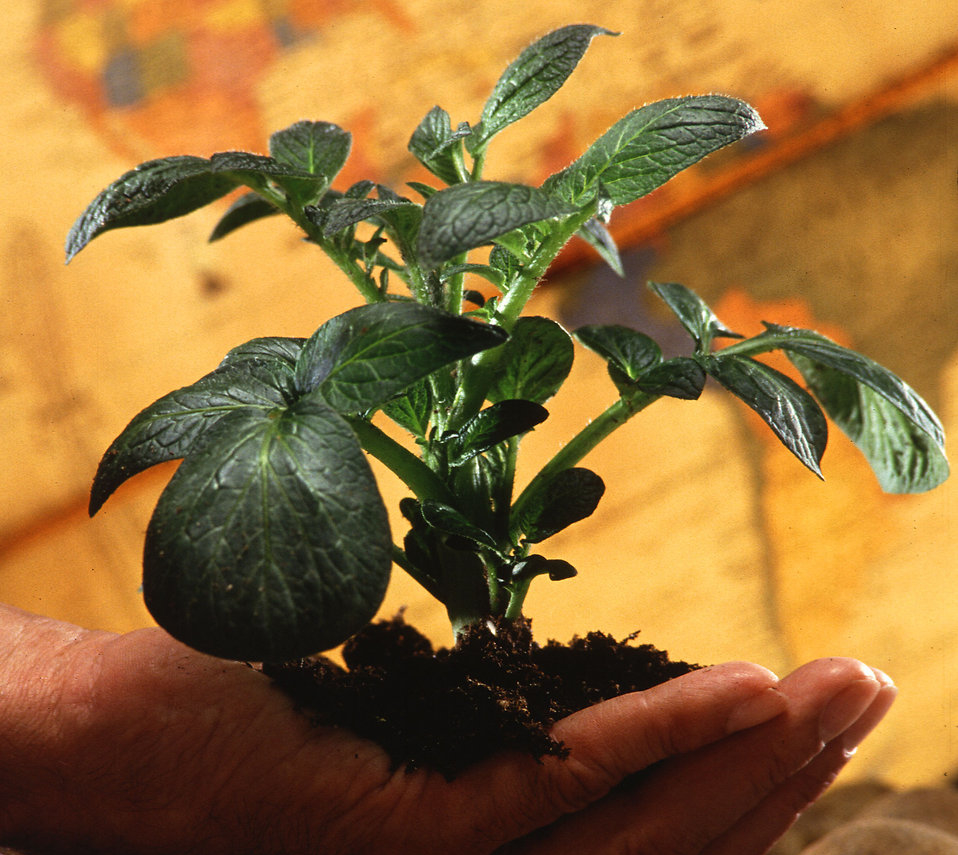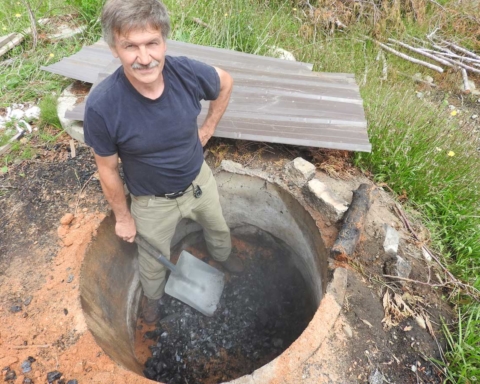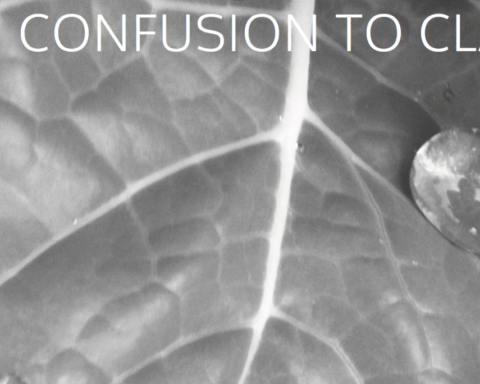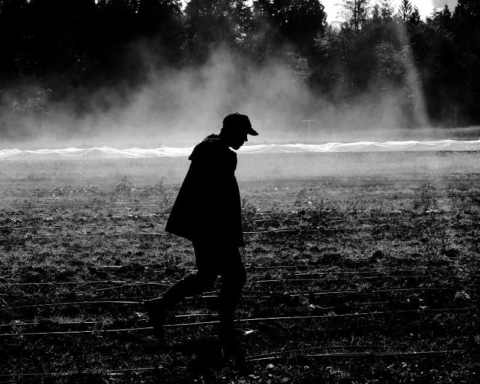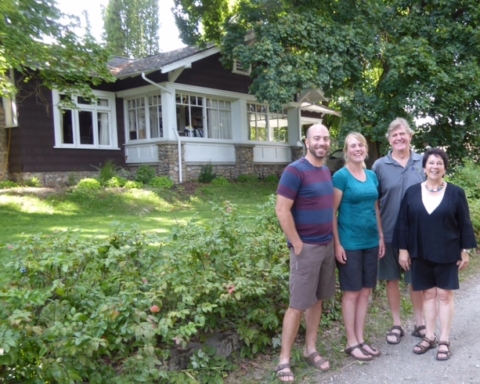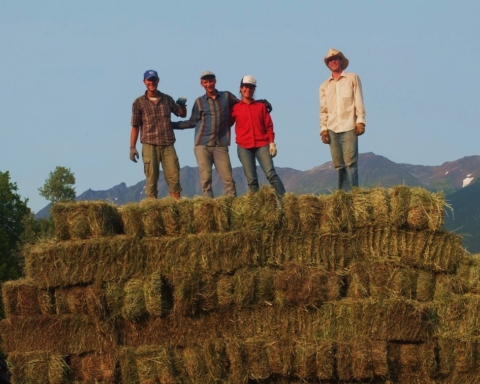Susan Smith P. Ag., Ministry of Agriculture
Solanaceous crops such as potatoes and tomatoes are hosts to late blight, the most destructive disease of potatoes in British Columbia. The pathogen causing late blight, Phytophthora infestans, thrives and produces spores under humid or moist environmental conditions. It causes infection only when free water is present on plants. Our wet weather conditions and cool to moderate temperatures make Lower Mainland BC an area where late blight can progress and spread very rapidly in Solanaceous crops grown both commercially and in home gardens.
On potatoes, symptoms of late blight first appear as large, soft, water-soaked spots with a light green halo on the leaves. Symptoms will also commonly develop on stems and leaf petioles which turn brown or black. In humid, wet conditions, a white, fuzzy mould can be seen on the underside of the leaves. As the disease progresses, the whole plant may die back to the ground. If late blight is present at harvest, tubers may become infected resulting in a firm brown rot that starts at the skin and eventually affects the whole tuber. Although symptoms appear slightly differently on tomatoes, the organism causing late blight is the same one seen in potatoes.
In addition to persisting in the soil and on infected plant tissues for a period of time, the late blight pathogen can cause infection through structures called sporangia during cool, wet, or humid weather. Sporangia can easily spread to distances of up to 20 km via water, wind, and wind-blown rain and cause infection in healthy Solanaceous plants. For this reason, when late blight is in an area, commercial potato growers are at risk of greater crop losses from disease outbreaks in the field and later when potatoes are in storage.
Potatoes and tomatoes are popular crops for the home garden and community gardens throughout the Lower Mainland. Late blight is a disease of both potato and tomato that, if not managed for, can easily be spread from gardens to commercial potato fields in the area. This can also be a means of introducing new and more vigorous strains (genotypes) of the late blight pathogen. To minimize and hopefully prevent this from occurring, there are steps that gardeners should be taking to help reduce the pressure of harmful and costly po- tato diseases to local growers.
In 2014, the BC Ministry of Agriculture and Agriculture and Agri-Food Canada – through Growing Forward 2, a federal-provincial-territorial initiative – were pleased to fund an education and awareness program for home and community gardeners. The BC Potato and Vegetable Growers Association developed information materials and delivered outreach events to raise awareness of harmful plant pests of commonly grown solanaceous crops. In addition, management tips were provided to reduce the risks to neighbouring commercial potatoes. The brochure developed can be found on the BC Certified Seed Potato Growers website
Prevention of Solanaceous diseases starts by planting disease-free tomato transplants and potato seed. Grow- ers are strongly encouraged to only plant certi ed seed potatoes and to never plant potatoes grown for tablestock or potatoes purchased for eating. This should be avoided because a potato tuber is a part of its mother plant and can carry its diseases and viruses. Certified seed potatoes (both the mother plant and its tubers) are inspected and tested to ensure that they do not exceed accepted levels of critical diseases. Non-certified potatoes have the potential to carry many economically harmful diseases – and when used as seed, can be the source of problematic viruses that could spread to nearby potato crops. Using certified seed potatoes is a good start for a successful disease-free crop.
Other important practices for preventing and minimizing the severity of late blight in potatoes and tomatoes include:
- Minimizing humidity by avoiding overhead irrigation
- Growing short-season varieties during periods where weather conditions are less favourable to late blight
- Preventively applying available, registered fungicides suitable for organic production (Note: always read and follow product label directions carefully)
- Learning to identify the symptoms of late blight
- Carrying out regular crop monitoring, from plant emergence to harvest, looking for late blight symptoms on the leaves, petioles, and stems of plants. Note: when disease is suspected, avoid spread of inoculum (i.e. spores) to healthy plants. Do not enter clean elds or planted areas with clothes, boots, gloves, pruning, tying equipment, vehicles, etc. that were used in planted areas infected with late blight
- Removing infected plants and carrying out a thorough clean up of infected plant materials, unwanted tubers, fruits, and volunteer plants. Dispose by either burning or removing in sealed bags. Do not dispose of diseased plant materials in your compost.
- Practicing crop rotation with non-solanaceous crops to minimize build-up of inoculum in the field.
For more information, please contact Susan Smith at the BC Ministry of Agriculture by email: Susan.L.Smith@ gov.bc.ca.
Susan Smith, P. Ag., is Industry Specialist, Vegetables and Organics with the BC Ministry of Agriculture.


